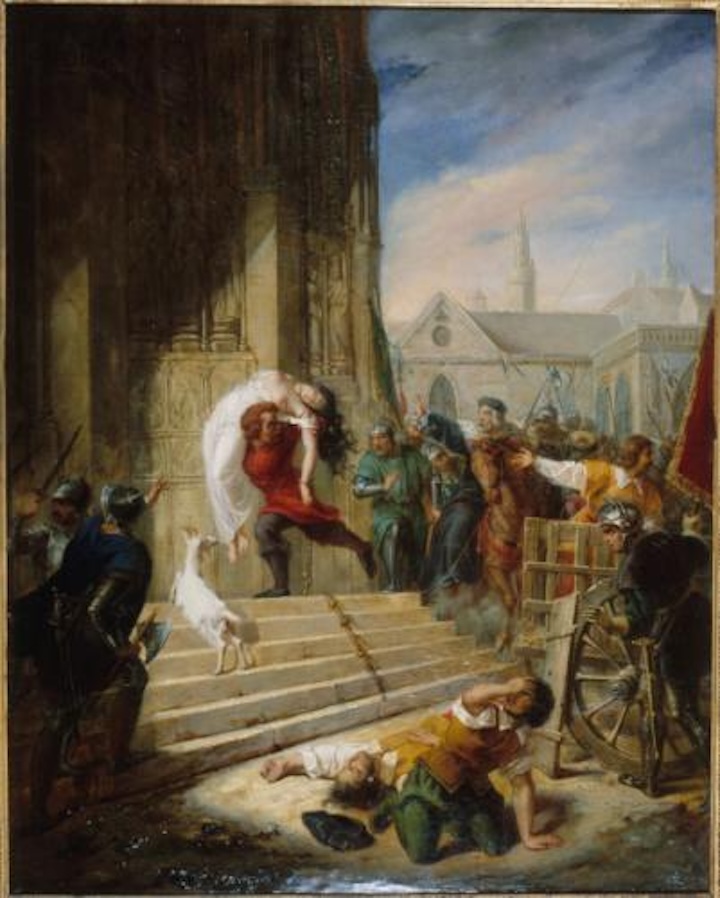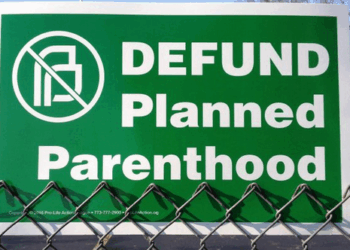“Sanctuary” has returned to the American political vocabulary, especially in the context of cities and states declaring they will not allow local resources – police or social services – to cooperate with federal authorities in identifying or detaining illegal aliens.
Contemporary Polish political philosopher Zbigniew Stawrowski argues that part of our modern problem is philosophical bait-and-switch: terms have been coopted by the Left, emptied of their original meaning, and replaced with new notions unmoored from the original. We see this in words like “rights,” “justice,” and “marriage.” We also see it with “sanctuary.”
A “sanctuary” is the most sacred part of a church. It is, by definition, holy. “Sanctuary” refers to the sacred space around the altar, often (at least by tradition) physically set apart by a border: the altar rail. Gradually, the special reverence afforded the sanctuary came to extend to the entire church building – and, occasionally, to its surrounding area because of its connection to the Church.
A further idea of “sanctuary” emerged in the Middle Ages as part of a larger issue: the relation of the civil and ecclesiastical powers. It’s not just a question of the “things of God and of Caesar” because medieval thought would never have imagined there were things belonging to Caesar that first and still didn’t belong to God. It was a question of who had jurisdiction where.
By the principle of “rendering unto Caesar and unto God,” sanctuary offered fugitives from the king’s justice refuge within God’s house. But this protection was not open-ended. As The Catholic Encyclopedia notes about “the right of refuge,” in some places after 30–40 days, sanctuary required the fugitive to swear to quit the king’s realm and not return without royal leave.
If he wanted immunity from some of the king’s laws, he had to make himself not subject to any of them. That is: sanctuary could delay Caesar’s justice by allowing time to sort things out, not nullify it. You could not normally indefinitely claim “sanctuary” from Caesar yet remain in Caesar’s realm.
Compare that with the contemporary aping of the term “sanctuary.”
First, it has almost no connection to a sacred place. True, some church leaders have asked the federal courts to bar ICE from making arrests in sacred places, but that’s almost a vestigial holdover from the term’s origins.
In truth, “sanctuary” has undergone a secularized apotheosis. It’s not necessarily connected to anyplace sacred: what’s holy about a Home Depot parking lot or even the whole State of California? Instead, these secular spaces have been sacralized not by anything inherent about them but by mere declaration.

The place is not qualitatively distinctive, only its designation. There’s no inherent moral or spiritual significance to the areas so designated.
If sacredness derives merely from being labeled as such, if everything can be a “sanctuary,” then nothing really is. Even churches now embody what one critic called “transitory sacrality,” often consistent with their “multipurpose” design. The explicitly sacred is time-boxed: “holy” from 10 to noon for Mass; available at 3 for a concert; and open at 6 for a chicken juggling performance. Just move the mensa and the candles adjacent to (not on) it!
Nor would Caesar necessarily acknowledge “sanctuary” in its original form. During COVID, aggressive states shut down public “events” and bishops accompanied them with blanket dispensations from Mass. If a “rogue” bishop – claiming “sanctuary” – had opened his cathedral for public worship, do you think the Detroit Police, for example, would have tolerated the “sanctuary?”
Let’s say a father fleeing a court order to “affirm” his child’s gender transition holed himself up in St. Mary’s in Sacramento. Do you think “gender sanctuary” California would deem him immune?
I don’t think so, in either case. And I’m willing to bet the same voices demanding “sanctuary” for illegal aliens would have no problem denying “sanctuary” in these cases, likely invoking “separation of church and state” to do it.
The logic of the modern “sanctuary” is partisan, not principled. It has less to do with upholding the moral authority of the Church than with exploiting its language to protect particular political agendas.
That explains why the historic immunity of sanctuary was abolished across Europe – first by Protestant reformers, then by secular Enlightenment regimes. It’s also what makes someplace a “sanctuary” – not from its religious nature but from a political act affixing the “sanctuary” label to. . .the Home Depot parking lot, Dodger Stadium, or the City of Berkeley.
Today’s redefinition of “sanctuary” is an additional indication of the marginalization of the Church. Contemporary sanctuary advocates want it both ways: preserving an immunity that grew up when it was rightfully recognized that Church and State were two independent “swords” while otherwise treating the Church (and sacrality) as Caesar’s subjects.
The Church abets this confusion when it employs this “sanctuary” rhetoric. It reaches the apogee of satire when the “right to sanctuary” on the part of illegals becomes so urgent that, in the name of those who “fear” arrest for being illegal, the Bishop of San Bernardino issues a standing dispensation from showing up in a real sanctuary on Sunday mornings.
We should recover a deep respect for the unique status of places of worship. We have at least 1,600 years of precedent for that. But that recovery will not occur when others coopt our terms in manners unrecognizable while the Church itself lends them support.




![Hegseth Demands Fitness Requirements, Says 'Fat Troops' 'Not Who We Are' [WATCH]](https://teamredvictory.com/wp-content/uploads/2025/09/Hegseth-Demands-Fitness-Requirements-Says-Fat-Troops-Not-Who-We-350x250.jpg)






